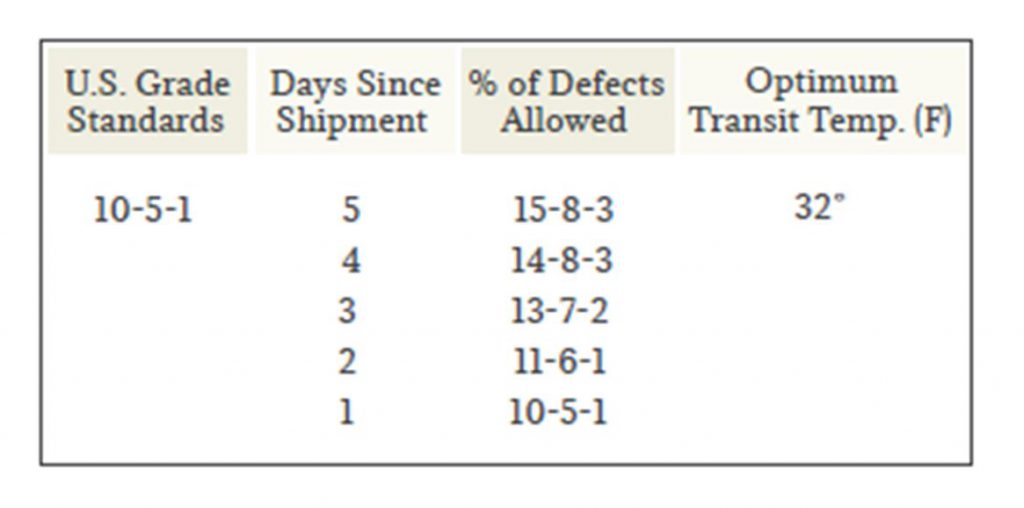When produce transactions start to go sideways, it’s helpful to have a clear understanding of industry trading rules.
Not to outmaneuver customers and suppliers with technicalities—Blue Book sees fewer people operating with this mentality these days—but to help guide a resolution that recognizes rights and responsibilities, mitigates losses, and ultimately keeps business flowing with as little disruption as possible.


Toward this end, we wanted to call attention to three misconceptions related to the warranty of suitable shipping condition (7 CFR 46.42(j)), the granddaddy of produce warranties, aka “good arrival.”
This warranty is essentially the seller’s promise that its product will hold up en route to the contract destination, provided transportation conditions are normal.
#3 The 5-day PACA Good Arrival Guidelines apply to longer and shorter trips.
While it is true that the 5-day guidelines apply to longer trips (e.g., a coast-to-coast intermodal trip normally taking 6 to 7 days) the 5-day guidelines do not apply to shorter trips (see the Good Arrival Guidelines below for asparagus).


The keys here are the second column (Days Since Shipment), and the column immediately to its right (% of Defects Allowed).
The second column represents the number of days in transit. So, if normally the product would arrive in the destination city on the second day after shipping, the two-day guideline would, in essence, define abnormal deterioration for that shipment.
In other words, the seller, by default, promises FOB product will have no more than 11% average defects, 6% serious defects, or 1% very serious defects (decay) on the second day after loading.
In a scenario where the inspection certificate was not obtained until the next day, so three days after loading, it is still the two-day guideline that applies. Applying the three-day guideline, as if this were a three-day trip, would technically speaking be an incorrect approach.
Regardless of the date of the inspection, the pivotal question remains: did the seller provide product that would arrive at destination without abnormal deterioration on the second day after loading?
To answer this question, the inspection certificate would need to be considered in view of the one-day delay in obtaining the inspection.
For instance, an inspection certificate showing 12% average defects would not be sufficient to show product that arrived the day before was abnormally deteriorated because some deterioration would be expected between arrival on day two and the inspection on day three.
And while, of course, this does not always yield a clear-cut answer, it must be remembered that the Good Arrival Guidelines are just that, guidelines.
Some interpretation, necessarily, comes into play in certain cases. It typically makes sense for the parties to attempt to reach a compromise settlement in these close cases rather than risking an all-or-nothing decision if the matter must be decided formally.
Conclusion
The warranty of suitable shipping condition is unique to the fresh produce industry. And although, by and large it serves its purpose remarkably well, it is not always easy to understand and apply.
Avoiding these common misconceptions will help.
This is an excerpt from the Trading Assistance Department of the March/April 2022 issue of Produce Blueprints Magazine. Click here to read the whole issue.



